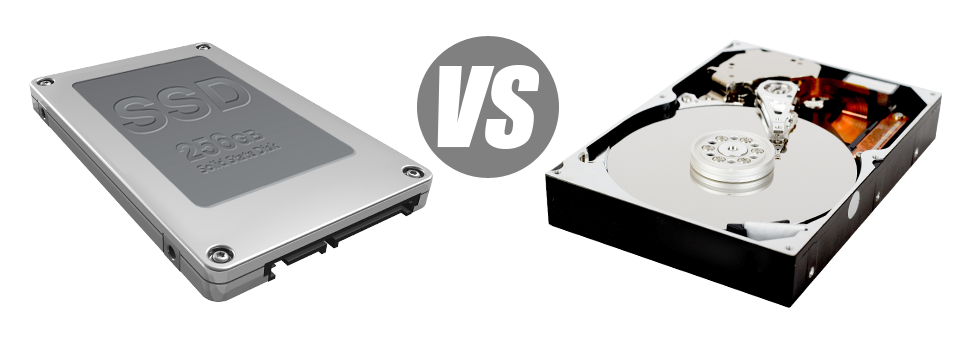For many years there was only 1 reliable option to store information on a laptop – employing a disk drive (HDD). On the other hand, this kind of technology is actually showing it’s age – hard disks are actually loud and slow; they’re power–ravenous and are likely to create quite a lot of heat throughout serious procedures.
SSD drives, on the contrary, are swift, consume far less power and tend to be much cooler. They offer a new way of file access and data storage and are years ahead of HDDs when it comes to file read/write speed, I/O operation and also power capability. Figure out how HDDs stand up up against the more recent SSD drives.
1. Access Time
Resulting from a revolutionary new approach to disk drive performance, SSD drives allow for much faster data access speeds. Having an SSD, file accessibility times are much lower (as little as 0.1 millisecond).
HDD drives count on rotating disks for files storage reasons. When a file will be accessed, you will need to wait for the right disk to reach the appropriate place for the laser beam to view the data file involved. This ends in a common access rate of 5 to 8 milliseconds.
2. Random I/O Performance
With thanks to the same radical solution allowing for quicker access times, you too can get pleasure from improved I/O effectiveness with SSD drives. They will conduct double as many procedures within a specific time as compared to an HDD drive.
An SSD can deal with a minimum of 6000 IO’s per second.
Hard drives provide slower data access speeds because of the older file storage and accessibility concept they’re implementing. In addition, they display noticeably reduced random I/O performance when compared with SSD drives.
For the duration of SmallBizHosting.biz’s trials, HDD drives dealt with typically 400 IO operations per second.
3. Reliability
The lack of moving components and rotating disks inside SSD drives, and also the latest advances in electronic interface technology have generated an extremely better data file storage device, with a normal failing rate of 0.5%.
Since we have documented, HDD drives rely upon spinning hard disks. And anything that works by using a lot of moving elements for extented time periods is susceptible to failure.
HDD drives’ common rate of failure varies among 2% and 5%.
4. Energy Conservation
SSD drives work almost silently; they don’t make surplus heat; they don’t demand supplemental air conditioning solutions and consume much less energy.
Tests have established the average electrical power use of an SSD drive is amongst 2 and 5 watts.
From the minute they have been built, HDDs have been very power–hungry systems. And when you’ve got a server with a couple of HDD drives, this tends to boost the monthly power bill.
Normally, HDDs use up somewhere between 6 and 15 watts.
5. CPU Power
The faster the data file access rate is, the swifter the data queries are going to be processed. Consequently the CPU do not need to hold resources waiting for the SSD to answer back.
The regular I/O wait for SSD drives is only 1%.
By using an HDD, you must devote extra time waiting around for the results of one’s data file ask. Because of this the CPU will stay idle for more time, expecting the HDD to react.
The common I/O delay for HDD drives is about 7%.
6.Input/Output Request Times
It’s time for several real–world cases. We ran an entire system backup with a web server only using SSDs for file storage uses. In that procedure, the normal service time for any I/O demand kept below 20 ms.
Compared with SSD drives, HDDs feature significantly slower service rates for input/output calls. In a web server backup, the standard service time for any I/O call varies somewhere between 400 and 500 ms.
7. Backup Rates
You can easily experience the real–world advantages of having SSD drives every single day. As an example, with a server furnished with SSD drives, a complete back–up is going to take merely 6 hours.
In contrast, on a hosting server with HDD drives, an identical back up normally takes three or four times as long to complete. An entire back up of an HDD–equipped web server typically takes 20 to 24 hours.
Should you wish to instantaneously add to the overall performance of your websites without the need to modify any code, an SSD–operated hosting solution is really a very good solution. Check out SmallBizHosting.biz’s shared web hosting – our services offer really fast SSD drives and can be found at inexpensive price points.
Hepsia
- Live Demo
Service guarantees
- Each one of our Virtual Private Servers is installed for you free–of–charge. 99.9% network uptime. Full root server access privileges.
Compare our prices
- Review the resources and parameters coming with our Virtual Private Servers. You can begin with a smaller VPS Web Hosting configuration and upgrade with simply a click as your requirements expand.
- Compare our hosting plans
Contact Us
- We’re on duty for you 7 days a week to reply to any queries about our VPS Web Hosting solutions. 1–hour reply time frame warranty.














